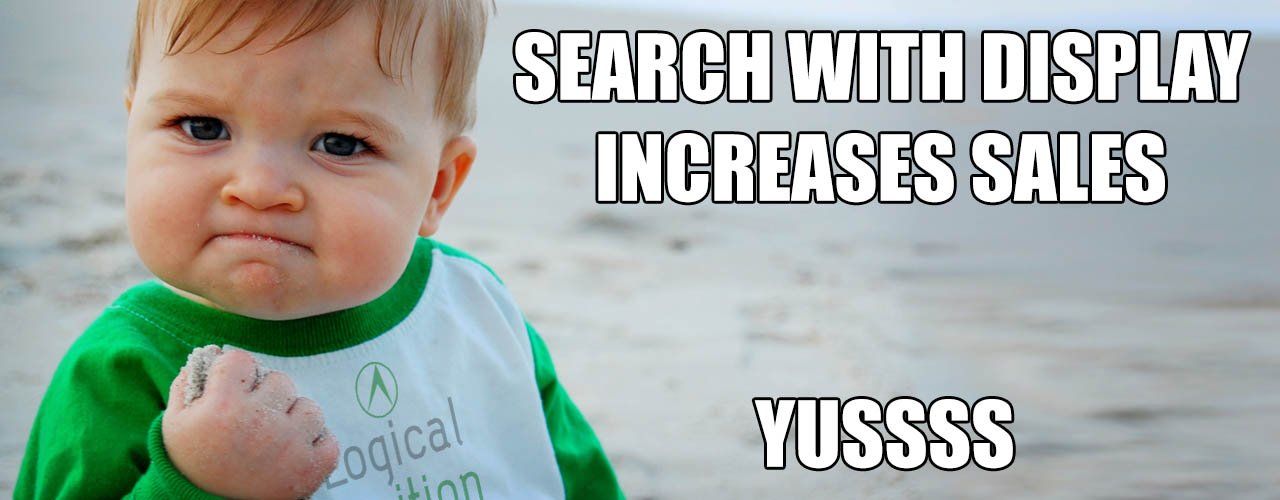Do you know the difference between the two different networks you can use to advertise on Google? If you find yourself confused or even if you just want to understand the value in each strategy, read on.
The Search Network targets Google search results pages with an ad is that shows up when someone is searching for a keyword in your industry, while the Display Network features a custom ad for your business on a Google search partner website. Search ads are usually text (although you can add image extensions to some), and Display ads are more visual, generally containing your brand, an image, and a call to action or special offer.
Which Network Yields The Best Results?
If you have the budget and you want your business to grow, you should really be running both Display and Search ads. Since Display ads have a cheaper CPC, you should allocate a good portion of your budget to Search and set aside a separate budget for your Display ads. Keeping track of the return you’re getting from each campaign will help you adjust your budgets to an optimal balance.
Be There When They Look For You
Search is the highest-converting platform for most industries. It’s the easiest to track, and it also puts your ad right on the front page of Google as an answer to a question from someone who is actively searching to buy or hire. Basically, the audience you target with Search is more qualified because they’re already looking for your product.
Although your Display audience hasn’t actively expressed interest in your product yet, they still could be a potential buyer. Display ads focus on what’s called the Search Funnel, which refers to all any pre-sale activity.
Since someone who sees your ad on the Display network is not as qualified as someone who is actively searching for it, a click might not lead immediately to a conversion — this is why the CPCs are lower. But they could convert later on, and this is why they’re a valuable investment.
It’s all about brand recognition — when a shopper goes to your website once, they’ll probably think of you when they’re more serious about buying. Display is more similar to traditional advertising in that regard.
The flexibility of the Display format allows you to promote your brand and be creative about using images to get the attention of your target audience. The targeting of the Display network allows you to show your ads on websites that are related to your services or product, automatically creating brand recognition that could lead to future sales.
Be There Before They Know To Look for You
Don’t get me wrong — it is possible to be more strategic about using Display to target audiences that are more qualified than otherwise if you consider their own methods for researching their purchases.
In an article for Sojern, Arendse Lund recommends thinking about where your customers are and what they’re looking for during all stages of their buying process. Think about where else they would be looking during the stage where they don’t even know they need you yet, but probably will.
The Google Display Planner and other tools can help get you stats that can provide you with information about what type of traffic different websites are getting and what shopping trends look like, which can be helpful when choosing search partners and designing powerful ads.
Get Back In Front of Them
One of the strongest aspects of the Display Network is the ability to remarket to your customers. Tony Palazzo, our Vice President of Marketing, wrote an article about this titled The Beauty of Remarketing. Remarketing is when a user visits your site and you drop a cookie on their browser. That cookie allows you to show Display ads to them even when they are on unrelated websites. It is incredibly powerful because you already know they are interested in what you offer.
Keep Track
The best way to see success with AdWords is to keep track of your data and pay attention to which aspect of your advertising is giving you the highest return. No two businesses are exactly alike which is why many businesses consult with an Internet Marketing Company to help. Display and Search are both great tools to help you reach your goals, but they must be used wisely.
Monitoring your ROI for both Search and Display and making consistent optimizations will go a long ways in helping you get the recipe right!

Logical Position, an Inc. 500 digital agency supporting 5,000+ clients across North America. LP is the proud recipient of Google’s Lead Generation Premier Partner of the Year and Microsoft's Global Channel Partner of the Year 2024! The award-winning agency offers full-service PPC management, SEO, Paid Social, Amazon and Creative Services for businesses large and small. As a Google Premier Partner, Microsoft Elite Partner & Meta Business Partner, LP is in the top 1% of ad spend managed across platforms.



